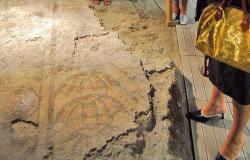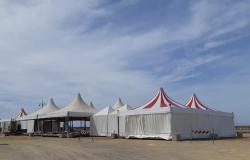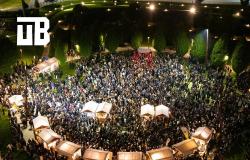Venice is considered one of the most beautiful cities in the world for its particular structure made up of islands and canals and for its extraordinary artistic and architectural beauties.
The Venetian capital, among other things, also has a peculiarity: it has a toponymy different from that of other Italian cities.
The streets and roads for example they are called differently: there are the calluses (a word derived from the Latin “callis” which means lane or path), the streets between two rows of inhabited buildings with shops on the ground floor; and the wrinkles (from the French “rue”), which are important streets from a commercial point of view.
The same goes for the squares: the only square in Venice, named as such, is Piazza San Marco. After having explored the districts of Venice, let’s see what the squares are called of this city and what are the fields, small squares and courtyards.
READ ALSO: What to do and visit in San Marco, the historic center of Venice. How much does it cost to live there?
Venetian fields: how they are made
Generally, in Venice what elsewhere are called squares are called campi.
The origin of the term comes from the fact that in ancient times the large spaces in which the streets converged were covered with grass and they were used for agricultural activities: for example, they were vegetable gardens or fields with crops and fruit trees or they were used to do graze animalssuch as horses or sheep.
Subsequently, these areas came paved and they became real city squares.
To get an idea of what they once looked like, you can see a field still covered today with meadows and trees: it’s about the field of San Pietro di Castello.
The field was a very important place on a social levelas it constituted a meeting place for the inhabitants of the surrounding houses: in fact, it was where the market and they looked out artisan workshops.
Typically, in the camp there was a church with adjoining cemetery, processions and religious events took place there, but also public speeches, games and tournaments. Furthermore, in the camp there was always a wellwhich, before the construction of a city aqueduct, was the only source for the inhabitants to supply themselves with water.
The name attributed to each field usually it’s this:
- of the church that stands there;
- of an important family;
- of the trades that took place there.
READ ALSO: Is the Island of Santo Spirito in Venice abandoned? How to get there and what to do
The little squares
The campielloas you can imagine, is a small field dimensionsperhaps just a widening of the street or an extension of a nearby field.
In it, generally, there is no well and instead there are numerous houses there: the campiello is therefore the center of neighborhood life, where chatter, gossip and arguments between neighbors take place.
The courts
There court it’s a even smaller squareequipped with a single entry from a portico or a street.
It’s about a kind of courtyard, an extension of the housewhere you can meet, talk or do household activities together, such as sewing, embroidery or preparing food.
Tags: Campi campielli courtyards Venice differences






